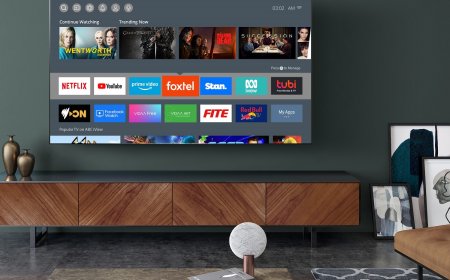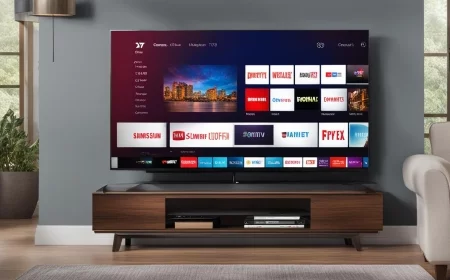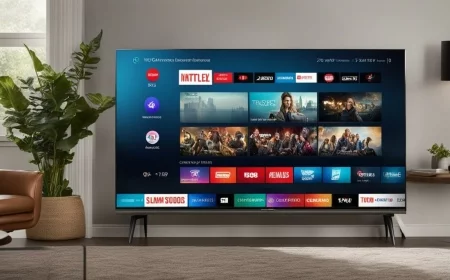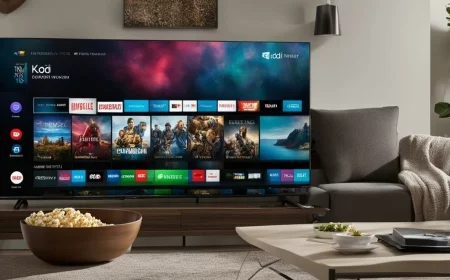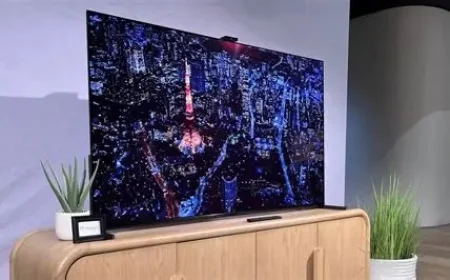IPTV in the USA: How It Works and Why It's Growing Fast
IPTV uses a "unicast" method, where content is delivered as data packets over IP networks. When a user selects a program, the request is sent to the provider’s server, which then streams the content directly to the user’s device. This contrasts with traditional TV, which broadcasts all channels simultaneously .

IPTV (Internet Protocol Television) is revolutionizing how Americans watch television by delivering content via internet protocols instead of traditional cable or satellite systems. This technology offers live TV, video-on-demand (VOD), and time-shifted media through internet-connected devices. Below is a detailed exploration of how IPTV works and the reasons behind its rapid growth in the USA.
---
📡 1. How IPTV Works
IPTV leverages internet networks to transmit television content, differing significantly from traditional broadcast methods.
· Content Delivery Mechanism:
IPTV uses a "unicast" method, where content is delivered as data packets over IP networks. When a user selects a program, the request is sent to the provider’s server, which then streams the content directly to the user’s device. This contrasts with traditional TV, which broadcasts all channels simultaneously .
· Architecture and Infrastructure:
IPTV systems typically use a centralized or distributed architecture. Centralized systems store all content on single servers, while distributed systems use multiple servers to reduce bandwidth strain and improve efficiency . Content is often delivered through fiber-optic networks to local nodes, then to households via broadband connections .
· Device Compatibility:
IPTV can be accessed on various devices, including smart TVs, smartphones, tablets, and set-top boxes (e.g., Amazon Fire Stick, Android TV). Set-top boxes decode IP signals into a format readable by traditional TVs .
· Content Formats:
IPTV supports multiple formats:
· Live Television: Real-time broadcasting.
· Video on Demand (VOD): Libraries of movies and shows accessible anytime.
· Time-Shifted TV: Allows users to watch previously aired content.
· Near Video on Demand (NVOD): Content started at staggered intervals .
---
🚀 2. Reasons for Rapid Growth in the USA
A. Cost-Effectiveness and Flexibility
· Significant Savings: IPTV subscriptions typically cost $10–$25/month, compared to traditional cable packages ranging from $80–$150/month . This affordability drives cord-cutting.
· Customizable Plans: Services like Sling TV offer tailored packages, allowing users to pay only for desired content .
· No Long-Term Contracts: Many IPTV services operate on monthly subscriptions, providing flexibility without rigid commitments .
B. Technological Advancements
· High-Speed Internet Proliferation: With 5G deployment and widespread broadband access (e.g., 25+ Mbps speeds), streaming high-quality content (HD/4K) without buffering is now feasible .
· Improved Streaming Protocols: Technologies like RTSP (Real-Time Streaming Protocol) enable efficient live TV delivery, while CDNs (Content Delivery Networks) reduce latency .
· Device Innovation: Compatibility with popular devices (e.g., Fire Stick, Smart TVs) makes IPTV accessible to a broad audience .
C. Content Variety and Personalization
· Extensive Channel Offerings: Legal providers like YouTube TV and fuboTV offer 100–400+ channels, including local networks, sports, and international content .
· On-Demand Libraries: Services like Hulu + Live TV combine live TV with vast VOD libraries, including exclusive originals .
· Interactive Features: DVR capabilities, multi-screen viewing, and personalized profiles enhance user experience .
D. Shifting Consumer Preferences
· Cord-Cutting Trend: Over 40 million Americans have switched to IPTV-like services, seeking freedom from cable’s limitations .
· Demand for Multi-Device Access: IPTV supports simultaneous streaming on multiple devices, catering to households with diverse viewing habits .
· Rise of Sports and Niche Content: Services like fuboTV focus on sports fans, offering comprehensive coverage of live events and specialized features like instant replays .
E. Market Expansion and Investment
· Booming Market Value: The U.S. IPTV market was valued at $32.6 billion in 2024** and is projected to reach **$106.7 billion by 2033, growing at a 12.4% CAGR .
· Telecom-Broadcasting Convergence: Major telecom operators (e.g., AT&T, Verizon) now offer IPTV services, expanding reach and credibility .
· Global Trends: The U.S. leads in IPTV revenue, accounting for 42.5% of the North American market .
---
⚖️ 3. Legal and Safety Considerations
· Legitimate vs. Unverified Services:
Legal providers (e.g., YouTube TV, Sling TV) operate with proper licensing, ensuring reliability and security. Unverified services may offer lower prices but pose risks like shutdowns, poor quality, or legal issues .
· VPN Usage:
Experts recommend using a VPN to protect privacy and avoid ISP throttling, especially when accessing unverified services .
· Regulatory Compliance:
The Protecting Lawful Streaming Act penalizes unauthorized streaming, emphasizing the importance of choosing licensed providers .
---
📊 4. Comparison of Top Legal IPTV Providers in the USA (2025)
Provider Starting Price Key Features Best For
YouTube TV $82.99/month 100+ channels, unlimited DVR, multi-view Comprehensive packages
Sling TV $45.99/month Customizable plans, budget-friendly Cost-conscious viewers
Hulu + Live TV $82.99/month Bundled Disney+ and ESPN+, large VOD library Live + on-demand combo
fuboTV $54.99/month 400+ channels, sports-focused features Sports enthusiasts
Philo $28/month 70+ entertainment channels Budget entertainment
---
🔮 5. Future Trends
· Immersive Technologies: IPTV is expected to integrate augmented reality (AR) and virtual reality (VR) for interactive experiences .
· AI-Driven Personalization: Enhanced recommendations and dynamic ad insertion will cater to individual preferences .
· Expansion of 5G: Faster speeds and lower latency will support higher-quality streams (8K) and broader accessibility .
---
💎 Conclusion
IPTV’s growth in the USA is fueled by its cost-effectiveness, technological advancements, and alignment with modern viewing habits. While the market offers immense value, users should prioritize legal services to ensure security and quality. As infrastructure and content evolve, IPTV is poised to become the dominant form of television consumption, reshaping the entertainment landscape for years to come.
For those considering switching, exploring free trials from reputable providers and ensuring robust internet connectivity are essential first steps .
What's Your Reaction?
 Like
0
Like
0
 Dislike
0
Dislike
0
 Love
0
Love
0
 Funny
0
Funny
0
 Angry
0
Angry
0
 Sad
0
Sad
0
 Wow
0
Wow
0





